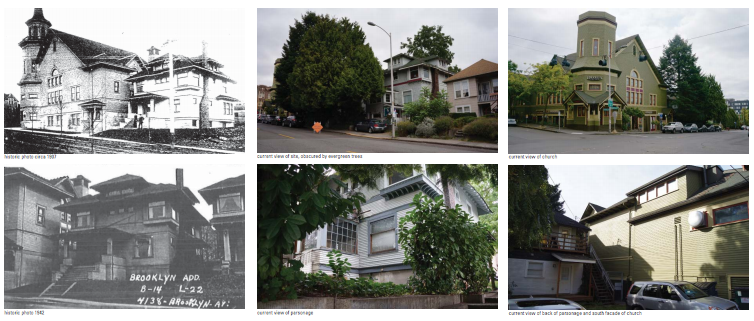
A new residential development, named The Parsonage, is coming to the heart of the University District. Barrientos, LLC is planning to construct an 84-unit residential apartment building on the east side of Brooklyn Ave NE, just south of the intersection of NE 42nd St and Brooklyn Ave NE. The project proposal includes an L-shaped building that would preserve an on-site historic structure. The new apartment building would be up to 7 stories high and would contain no parking, which is common for many new residential buildings in the University District.
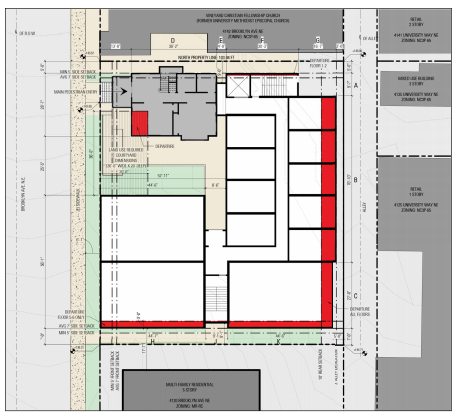
Locals to the area may be familiar with the quirky, historic church situated on the primary corner of the block. Constructed in 1906, this building has changed hands a number of times and now houses the Vineyard Christian Fellowship Church and two Asian restaurants. (Talk about mixed uses!) The new development, however, is proposed to take place on three lots to the south, which includes the lesser-known neighbor to the church, known as the Parsonage (from which the development takes its name). The two residences that currently exist at 4128 and 4132 Brooklyn Ave NE would be demolished.
The Parsonage forms an important part of the development proposal because that building is a protected structure. The building was constructed in 1907 and used as the rectory by the church’s successive pastors, until it passed into private hands. Its quality of character and connection to the church gives the Parsonage a very high protection status. And, as part of any development, the Parsonage must remain intact on the site.
As you may have noted from the first image above, the Parsonage is entirely invisible from the street. A series of bushes and large trees have walled off the structure from public view of the street. The developers have been careful in devising alternative plans that would honor and enhance the historic structure. Each alternative option proposes to bring this structure back to the forefront of the property so that all can enjoy the architectural integrity. But more than that, this will help the developer maximize the property for development.
The developers are hoping to the bring the historic Parsonage back to life as amenity space for residents. The developer wants to encourage social gatherings and opportunities for group studying in the building. The developer’s preliminary proposals have already been vetted by the Architectural Review Committee (ARC) of the Landmarks Preservation Board with the ARC coming out in support of Option 3.
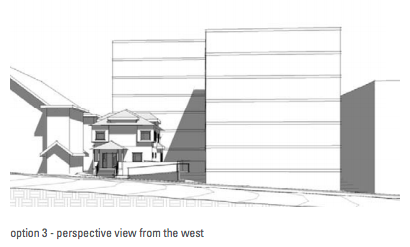 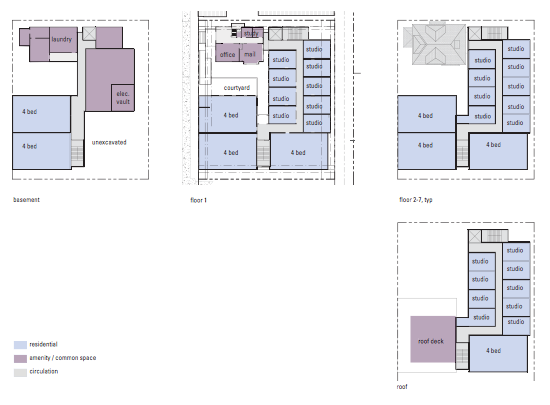 |
Under the preferred option (Option 3), the developer says that they want to achieve a number of different goals like increased site circulation, reduced bulk, open space, and reduced setbacks. The developer plans to establish a pathway along the north property line. By doing this, it would help let additional light into the church and increase site circulation. The street-side building height would drop by one floor under Option 3 in order to reduce the perceived change in height between the historic Parsonage and the new apartment building. To some, the scale proposed as it is may seem quite dramatic even with this subtle softening in height. Departures from the Land Use Code are proposed for alleyway and sideyard setbacks. These are minor in nature and seek to maximize development of the residential units. The developer also hopes to create a courtyard to serve the residents.
Ultimately, the developer hopes to use a contemporary look on the new apartment building. But at this stage, only rough schematics are provided, which appear very bulky in comparison to the humble Craftsman Parsonage. Hopefully in the next Design Review phase, the developers will identify materials, modulations, and other architectural techniques–beyond those discussed–to directly enhance the quality of the two historic structures surrounding the future apartment block. This kind of complementary construction with historic structures is not new to Seattle — it’s been done well dozens of times — and the architects note several examples in their Design Review package.
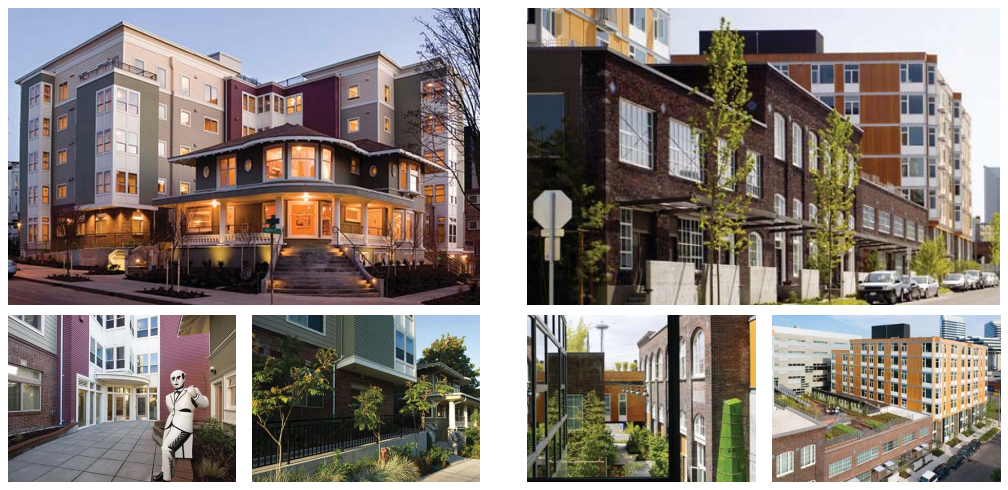
For all the good that this project will bring, there may be a significant, missed opportunity at hand. The University District is very likely to see significant zoning changes in the coming year. Under the maximum rezoning plans, buildings on this site could soar to heights of up to 320 feet with more than twice the density of residential space. However, the properties are set to be redeveloped under the current MR-RC zoning (Midrise Multifamily Residential and Residential Commercial).
This zoning allows for lowrise structures of up to 60 feet in height, and 75 feet when incentives are used (i.e. 6 or 7 stories in height). Commensurate maximum Floor Area Ratios of 3.20 and 4.25 control the form of site development by requiring some open, uncovered areas of the site. Commercial uses are also allowed onsite, but they are geared toward smaller commercial uses like convenience stores, restaurants, and retail sales with square footage maximums for individual tenants. In this instance, the developer has settled on a 7-story structure which will receive a bonus story by taking advantage of the City’s Housing Incentive Bonus Program.
Whatever the case, The Parsonage will still be a welcome addition to the University District, giving more housing options to students and long-term residents alike.
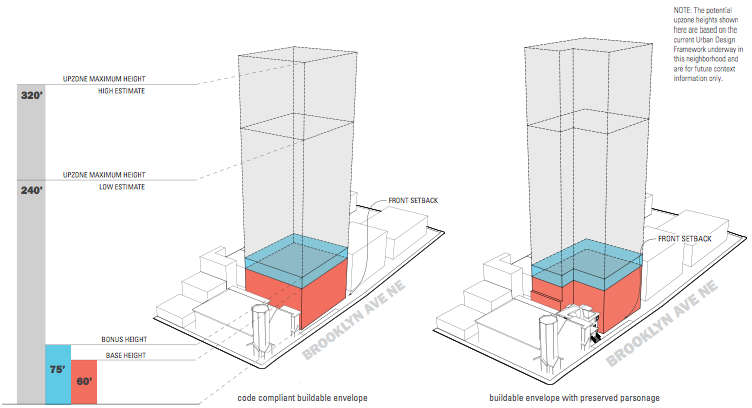
How To Get Involved
If you’re interested in attending the community design review meeting for this project, you can do so tonight. The Northeast Design Review Board will meet at the University Heights Community Center in Room 209, located at 5031 University Way NE. The Parsonage design review meeting begins at 6.30pm. Alternatively, if you wish submit comments in written form, you can do so by e-mailing Lindsay King, Project Planner, at Lindsay.King@seattle.gov and the Department of Planning and Development (DPD) at PRC@seattle.gov.
For more design review materials and upcoming meetings, see DPD’s design review page.
Stephen is a professional urban planner in Puget Sound with a passion for sustainable, livable, and diverse cities. He is especially interested in how policies, regulations, and programs can promote positive outcomes for communities. With stints in great cities like Bellingham and Cork, Stephen currently lives in Seattle. He primarily covers land use and transportation issues and has been with The Urbanist since 2014.



